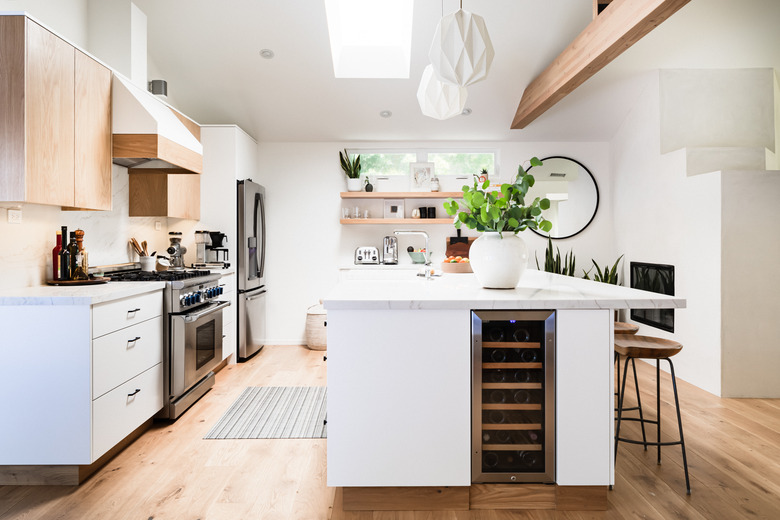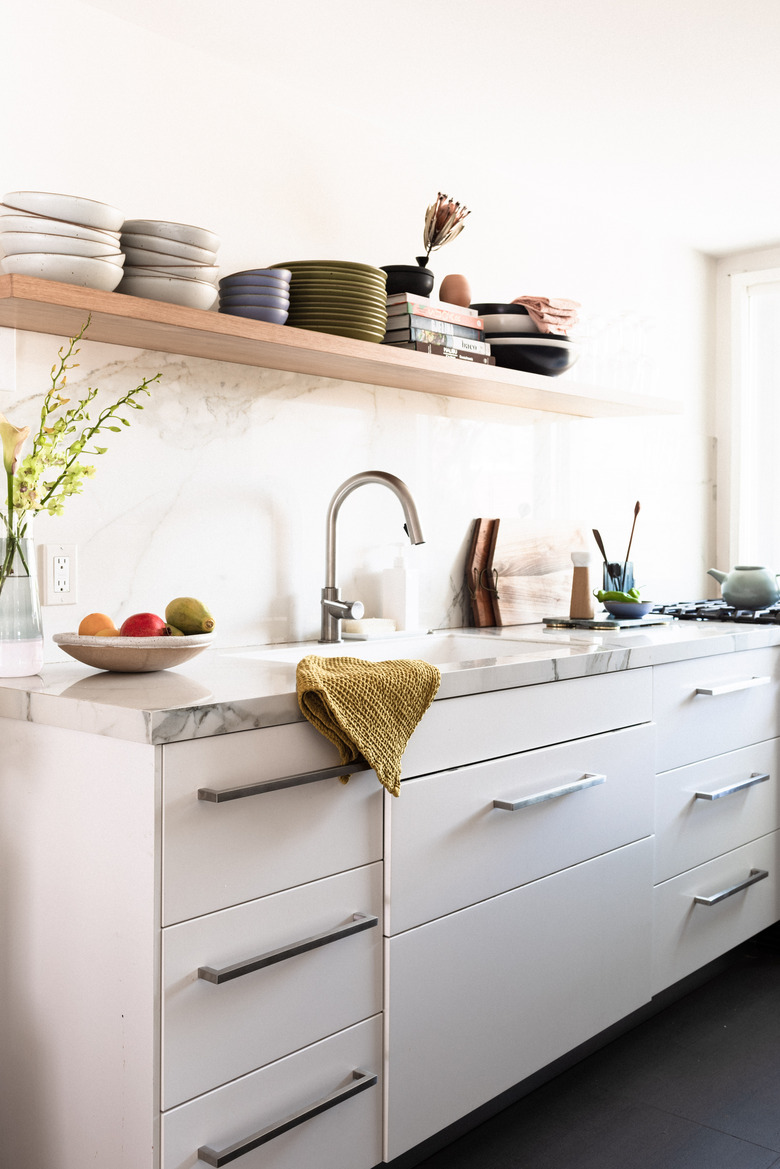What Are Pre-Assembled Cabinets?
If you don't plan to have your new kitchen cabinets custom built and you're not going to build them yourself, you have two options. The first is to buy ready-to-assemble (RTA) cabinets and assemble them yourself (or have a pro do it), and the other is to purchase pre-assembled cabinets.
You'll generally find both options available at big-box stores and online retailers, and there's a lot to like about the pre-assembled option. However, pre-assembled cabinets aren't always the most practical choice, especially if you choose cabinets that have to be shipped from afar. To help you decide, it's good to consider the pros and cons of pre-assembled cabinets, including the associated costs.
Tip
Pre-assembled cabinets are built at the factory and come to your home looking exactly as they did on the showroom floor. Unlike RTA cabinets, they carry a workmanship guarantee and a warranty.
Advantages of Pre-Assembled Kitchen Cabinets
Advantages of Pre-Assembled Kitchen Cabinets
These items land squarely on the list of perks you can expect by choosing pre-assembled cabinets:
- Pre-assembled cabinets come to your home in their final form, looking just the way they appeared on the showroom floor, and all you have to do is install them. As long as you measured carefully and have prepared the floor and wall, the installation should be relatively problem-free.
- Because they have been assembled at the factory, pre-assembled kitchen cabinets are more solid than RTA ones, and because the manufacturer did the work, the cabinets come tested, certified and guaranteed. Most cabinets available from stores or online suppliers are certified by the Kitchen Cabinet Manufacturers Association and carry a limited warranty to protect you from defective workmanship.
- Pre-assembled cabinets can include features not available with RTA cabinets, such as a lazy Susan, a trash pullout and elaborate pre-installed molding.
The Main Drawbacks of Pre-Assembled Kitchen Cabinets
The Main Drawbacks of Pre-Assembled Kitchen Cabinets
If budget is your main concern, you'll probably want to stick with RTA kitchen cabinets, which cost on average about 30 percent less than pre-assembled ones, according to data from Kitchen Cabinet Kings. However, the extra upfront cost may make sense if you have to drop money hiring an installer to put together your RTA cabinets. Don't forget, though, that you have to add the cost of shipping. Although a few retailers offer inexpensive shipping options, the cost is generally higher for pre-assembled cabinets than RTA, which are shipped in flat boxes.
The fact that pre-assembled cabinets come ready to install can actually be a drawback if you need to make modifications to fit a base cabinet or a wall cabinet into an unconventional space. Making these or any other changes usually voids the warranty. Because RTA cabinets come in pieces and don't have a warranty in the first place, they offer more flexibility.
What Do You Get When You Order Pre-Assembled Cabinetry?
What Do You Get When You Order Pre-Assembled Cabinetry?
It's possible to identify three classes of pre-assembled kitchen cabinets: budget, mid-level and premium cabinets.
- Budget cabinets, often called "stock cabinets," feature simple and utilitarian designs, and they often include frameless construction and basic, inexpensive materials. The least-expensive ones are usually made of veneered particleboard or medium-density fiberboard (MDF). Costs start at $70 per linear foot.
- Mid-level cabinets are partially custom made and can include bonus features, including a choice of door styles, all-plywood construction and solid wood frames around the doors. Costs start at $150 per linear foot.
- Premium cabinets are almost custom built. They allow for more flexibility in dimensions and are almost always made of plywood instead of moisture-vulnerable particleboard or MDF. If you're looking for custom features, such as exotic hardwood or a hand-rubbed finish, or you like the idea of traditional woodworking joints or specialty storage cabinets, this is the way to go. Prices start at $500 per foot, and considering that an average kitchen has 25 to 40 feet of cabinet space, this choice can add a considerable amount to your remodeling budget. But if you get all the high-quality features you want, it's worth it.
Keep in mind when shopping for new cabinetry that the countertop usually isn't included, so you also have to factor it in. Options range from inexpensive laminates to mid-range solid-surface materials to high-end stone.
Installing RTA and Pre-Assembled Cabinetry
Installing RTA and Pre-Assembled Cabinetry
If you're in the middle of a kitchen remodel and you're on a tight budget, you might not mind doing the extra work involved with assembling RTA cabinets. They do, after all, come with everything you need to put them together, and the assembly instructions — even the pictorial ones supplied with IKEA cabinets — are generally easy to follow. After assembling the cabinet boxes, you typically fasten them to wall studs and install each cabinet door separately.
Some pre-assembled cabinets may also require a little assembly. The doors aren't always pre-hung, and you may have to install them yourself. This is actually a good thing because it prevents damage to the doors during shipment, and it ensures each cabinet door is straight and level. That might not be the case with pre-hung doors if the floor isn't level or if there's another problem with installation.

